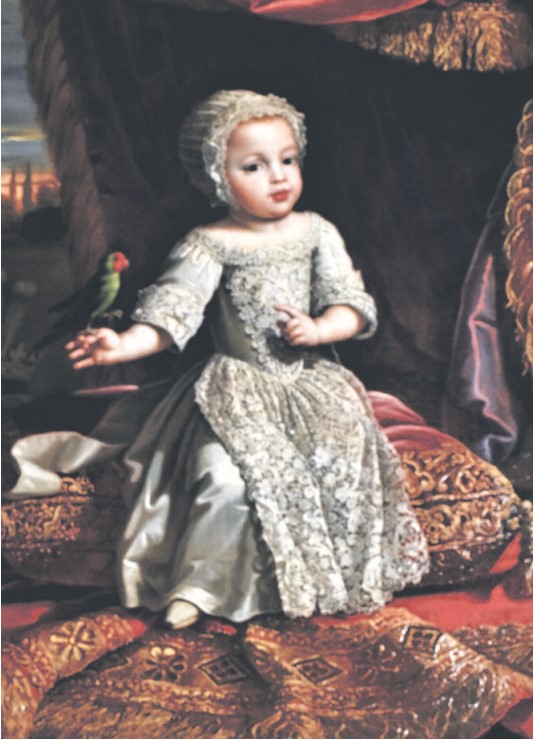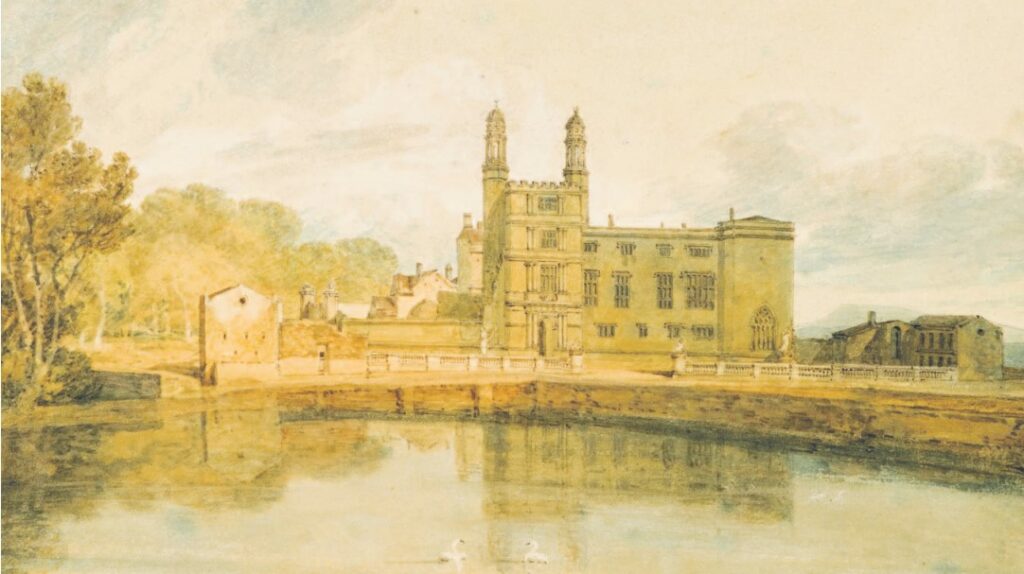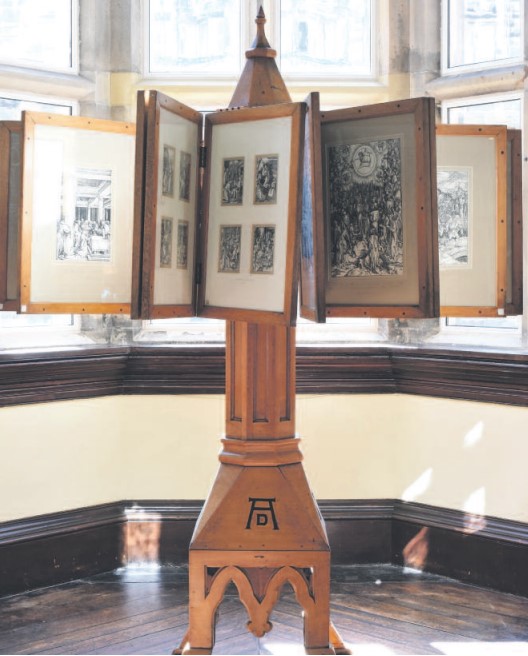May 2017
Stonyhurst Jacobite paintings recall the Catholic ‘kings over the water’
Elizabeth Robinson
The extensive art collection at Stonyhurst College has been built up since the foundation of the school itself in St. Omers, France, in 1593. The collection includes works by Rubens,Turner, Dürer and Rembrandt. As might be expected in a Jesuit college, the art reflects Catholic religion and history. Stonyhurst owes most of its paintings to Fr Thomas Glover, SJ (1781-1849), the Jesuit agent for the English Province in Rome.
‘If all our missionaries would save up a few pounds annually, all their chapels and houses might be in a short time devotionally furnished’ he wrote, and his efforts at Stonyhurst College reflect his industrious gathering of art in Rome, including Flemish medieval diptychs, Italian Renaissance and baroque works.
The Alberoni Collection at Stonyhurst holds interesting pieces of Jacobite propaganda. Ten paintings were collected by Fr. Glover in the 1830s from the villa of Cardinal Giulio Alberoni (1664 -1752). Some of the paintings seem to have been given to him by the Stuarts in return for his support and organisation of the two Spanish-led Jacobite uprisings of 1719.
These paintings include one by Benedetto Gennari commissioned by Queen Mary Beatrice of Modena of the infant James Francis Edward Stuart, Prince of Wales. This painting hung in the Queen’s bedchamber and shows the Prince as a strong and healthy baby holding a parakeet, in luxurious surroundings. The painting emphasised the difference between the exiled Stuart royal family and the childless English monarchs, William and Mary, who had ousted the Stuarts.
The Alberoni Collection also includes a full length portrait of the young Prince Charles Edward Stuart, better known as Bonnie Prince Charlie, which was painted by Antonio David in 1726. This is the first official portrait of the Prince, and depicts him in the clothing of an adult. The Bonnie Prince is gesturing towards a crown with the feathers of the Prince of Wales and the motto ‘Ich Dien’, portraying him as the rightful heir to the British throne. Many of the paintings at the college have been donated by various benefactors and old pupils of Stonyhurst, but there was also a collection found in situ at Stonyhurst when the pupils and staff arrived in 1794, having been forced to leave their college on the Continent because of the French Revolution.
Stonyhurst had been the property of the Shireburn and Weld families, and was donated to the Jesuits to form their new school. When the Jesuits and their pupils travelled from Liège in 1794, the Stonyhurst mansion had become dilapidated and empty of furnishings. However, entries in Lady Catherine Shireburn’s Inventory Book of Household Goods at Stonyhurst, dated 1713, describe paintings which were clearly left behind by the family. These are still in the college collections today, depicting biblical scenes such as the Nativity, the Circumcision and the Flight into Egypt.
Stylistically they date from the mid17th century and may well have been bought by sons of the Shireburn family during their time at St Omers. According to the Shireburn Inventory, 20 of these paintings were in the family chapel in 1713 and survive at Stonyhurst as a testament to the spiritual life of English Catholic families trying to live their faith under the government penalties of the late 17th and early 18th centuries.
The painting known at Stonyhurst as The Jesuit Family Tree was acquired in London in August 1834 and contains some two hundred portraits of members of the Society of Jesus. It is described as a ‘Spanish painting’ by Fr Norris, bought from an art dealer who asked £140 for it , describing it to have come ‘from Martin Luther’s house and it was a representation of the First Reformers’. Fr. Norris and Mr Jenkins realised that it was a Jesuit painting, and managed to purchase it with a frame for the bargain price of £52.

The painting was commissioned by King John of Portugal, a great supporter of the Jesuit Missions. It depicts the saints and martyrs of the Society in the mid 17th century, including the English martyrs, Edmund Campion, Robert Southwell and Henry Walpole. The painting contains four large landscape scenes depicting Jesuits working in the missions fields of Europe, Africa, Asia and America. It is a powerful reminder of the global nature of the Jesuit missions in the 16th and 17th centuries.
Of great interest to Stonyhurst is the painting of the college by J M W Turner, painted after his visit to the college in 1799. This is the first known image of Stonyhurst, painted by Turner while he was producing drawings of Whalley Abbey for Dr. Whittaker’s History of the Parish of Whalley published in 1801. This watercolour of Stonyhurst was exhibited in London in 1832-33 at the gallery of Messrs. Moon, Boys and Graves in Pall Mall East. This painting is a fascinating record of the original Tudor house at Stonyhurst.
The Great Triumphal Car of the Emperor Maximilian I is a massive wood engraving that took the artist, Albrecht Dürer, ten years to create. It is part of a much larger work, never completed, which was intended to be around one hundred and seventy-seven feet long. The print, as it stands, shows the Holy Roman Emperor, Maximilian I, processing in a public demonstration surrounded by the four Cardinal Virtues: Justice, Fortitude, Prudence and Temperance. A Winged Victory stands behind the emperor holding a laurel leaf crown with the titles of his military conquests in France, Hungary, Bohemia, Switzerland, Germany and Venice on its wings.
The female driver of Maximilian’s car is titled Reason and she holds the reigns of Nobility and Power. The twelve powerful horses which pull the car reflect imperial virtues such as Speed, Providence and Gravity. The print was finally completed in 1522 and it was dedicated to Maximilian’s son, Charles V, the nephew of Queen Katherine of Aragon. There are over one hundred prints by Albrecht Dürer in the collections at Stonyhurst many of which are housed on the ‘Dürer Rocket’, a purpose built display case made by college carpenters in 1911.
The works described comprise a small part of the art collection at Stonyhurst which is used to help pupils and visiting researchers alike. It acts as a visual reminder of the global nature of Catholicism, and the teachings of the Church. The paintings act, as Fr Glover, hoped they would, as a devotional repository of inspirational art.


